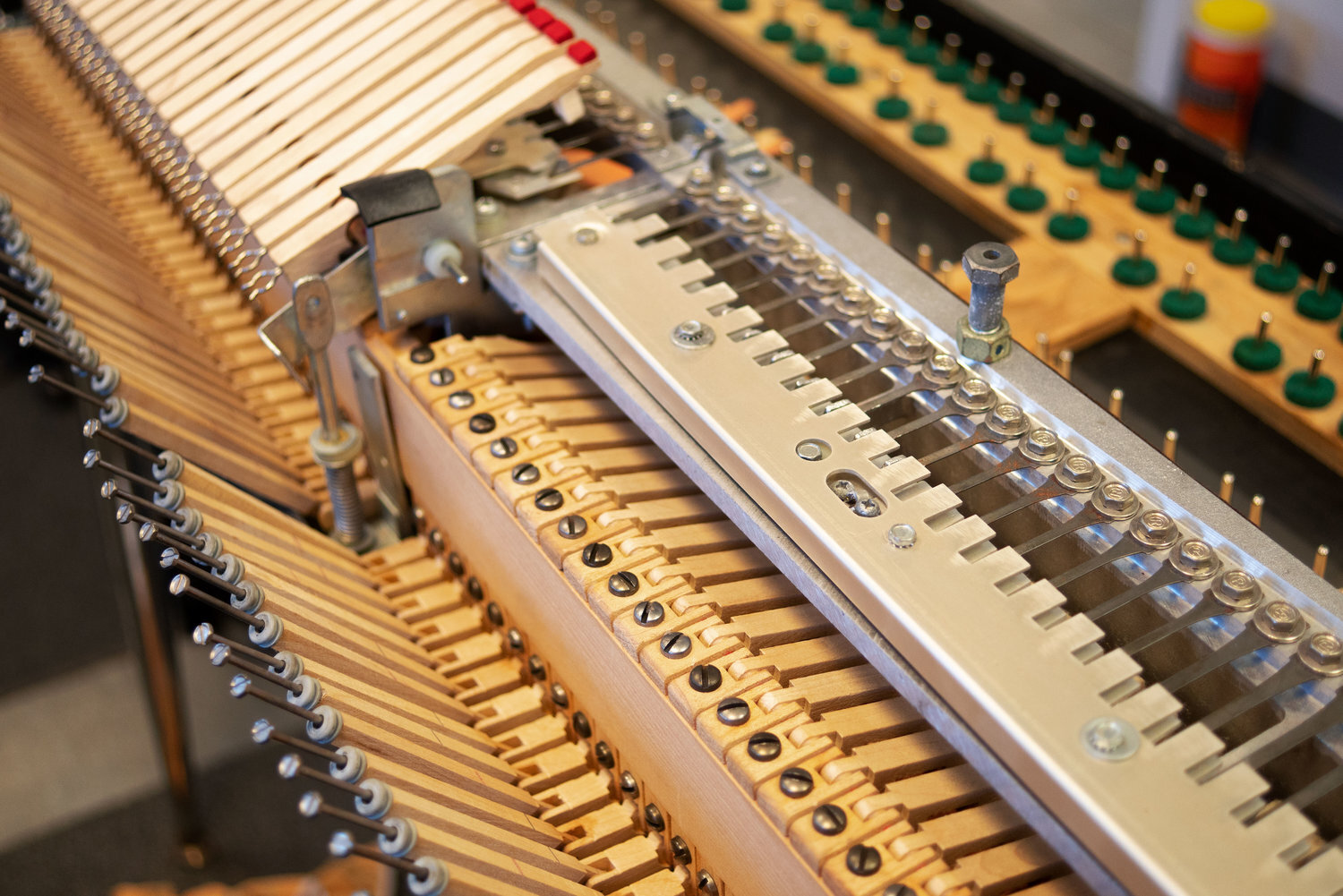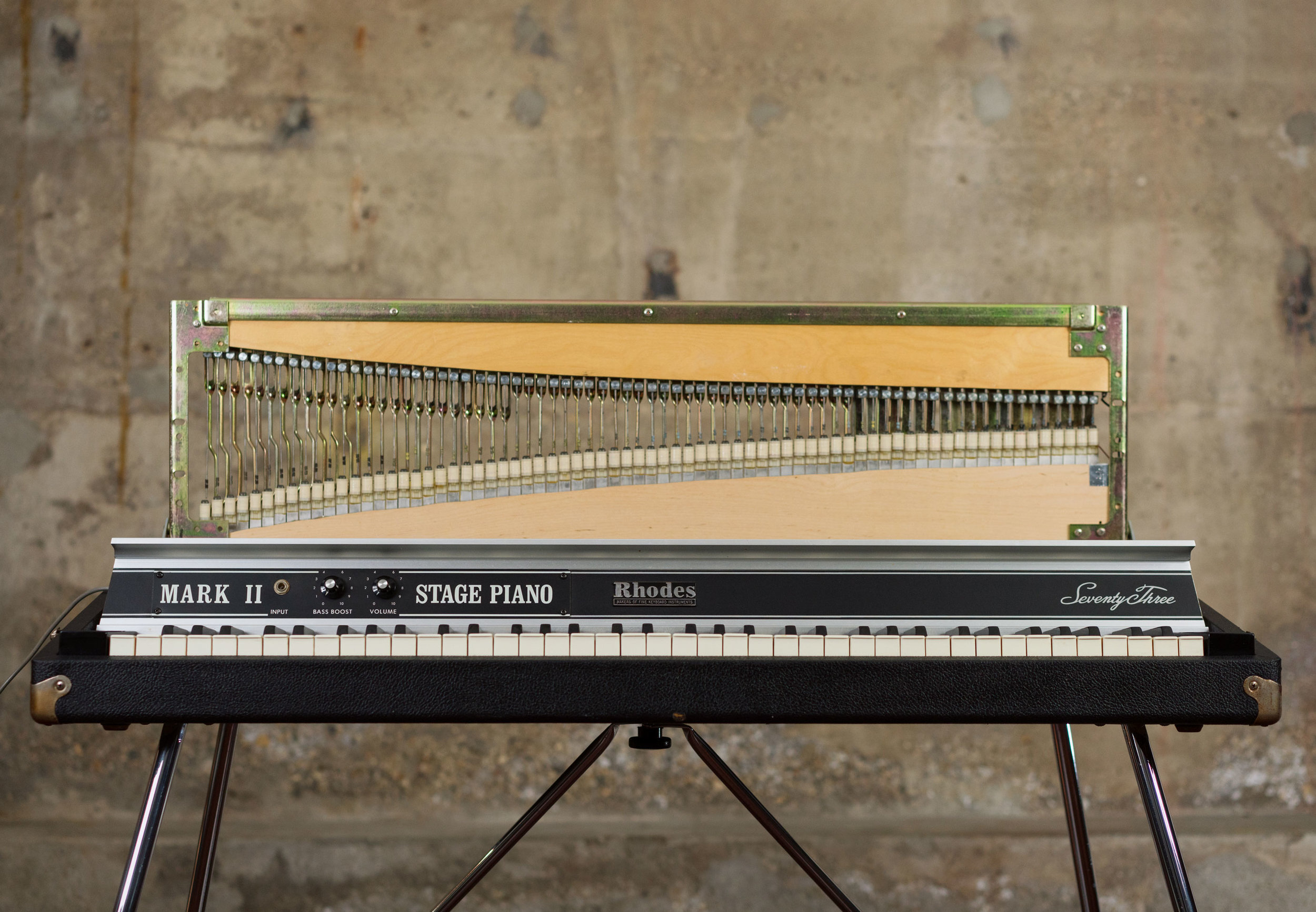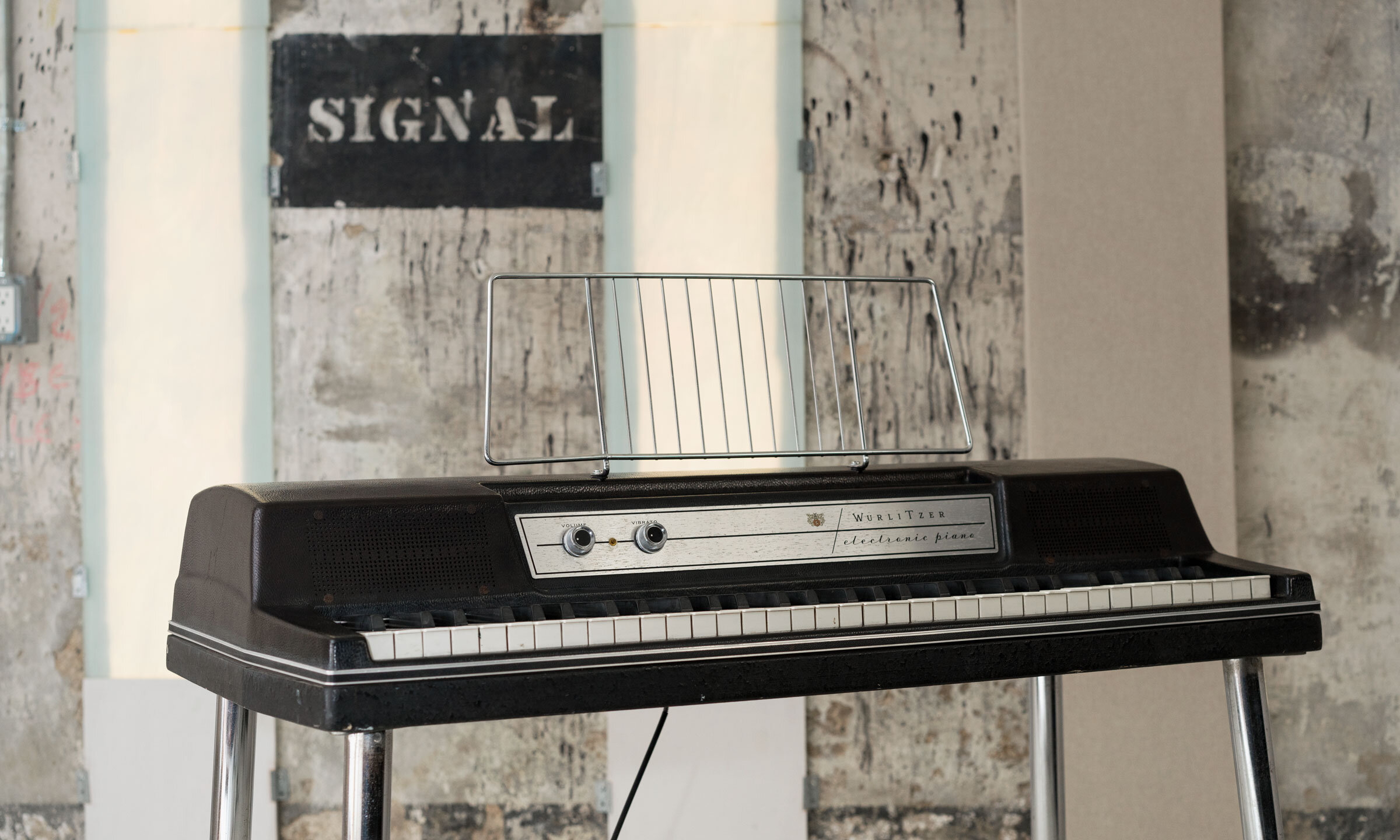What should come with my Wurlitzer 200 or 200a?
Wurlitzer 200 and 200a keyboards came with some essential accessories and parts, as well as some that were optional at the original time of purchase. If you are less familiar with a Wurlitzer 200 series keyboard, you might overlook something that is critical and you’ll want to have. For the sake of this article, we will be discussing exterior items and accessories, not internal mechanicals, and will be focusing on the 200 and 200a. However, a lot of this information can be applied to the rest of the 200 series (such as 203, 210, 214, 206 and so on).
To help with your purchase, the list below goes over the items that were not permanently attached to the keyboard and often become lost of separated over the years. While many of these parts are available in reproduction form, it is more valuable to have the original part in good shape. Additionally, some of these original parts are available on online marketplaces, but the prices can be steep!
Note that a Wurliter 200 or 200a will still function without these parts, but having them will provide a better playing experience.
A list of exterior & cosmetic parts that a Wurlitzer 200 or 200A should have
The keyboard itself. This includes the body of the keyboard, which we will define as the key-base, as well as the lid and everything inside of it. The key-base is made of wood with a textured (almost always) black paint finish. The lid is an ABS molded plastic with a texture that nearly matches the key-base. The lid came in black, blonde (beige), red, forest green or avocado green. The lid had a faceplate on the front of it that reads “Volume” & “Vibrato” over (or, on early models, under) the control knobs. The right of the faceplate will read Wurlitzer and Electronic Piano. The faceplate is made of a thin metal and is either polished or a brushed matte aluminum.
Keyboard small parts. The keyboard itself has a few small parts that often go missing. These include two plastic knobs which have a faux chrome-look top coat to them and a black circular decal on the front face of them. Later 200 and 200A knobs have a dot indicator on the knob and the early 200 did not. The lid is fastened with five screws: three long under the key-base and two medium length on the top which hold the music rack.
The pedal. The sustain pedals for a Wurlitzer 200 and 200A are functionally identical. They consist of a plate (where your foot rests), a wooden housing (painted identically to the key-base), the metal pedal arm (that you depress with your foot), a bowden type cable and a metal shaft attaching assembly. The pedal is meant to detach because of this can be lost to storage. Some players (I’ve heard…) don't use them [clutching my pearls] which can also aid in the pedal getting separated and lost.
The music rack. The sheet music rack is detachable and a lot of players keep this off, which, again, makes it prone to being lost. The two lid screws are meant to hold the music rack in place with two rubber grommets in the lid hole to protect the lid from being marred. On that note, the rubber grommets don’t tend to go missing but rather deteriorate and degrade from friction is use. However, these can be replaced rather cheaply, and doing so does not have an impact on the keyboards value.
The bench. This is a feature that was an optional purchase originally, so original benches are somewhat rarer. The bench top matched the Wurlitzer key-base paint job identically. The bench also had four leg flanges, just like the keyboard itself, and four chrome legs, nearly identical to the keyboard legs except bench height.
Lastly, the power cord. On the 200 series Wurltizers the power socket was always three prong. Early Wurlitzers used a “oval” Switchcraft power socket while late 200A had a more standard IEC socket. The power cord will match these sockets by shape, and it detachable of course.
Paperwork. To our knowledge, service manuals and paperwork did not typically come with the instrument at the time of original purchase - perhaps a receipt (which would be cool and collectible—or maybe a sales flyer if you were lucky to grab one on your way out of the store). But luckily service manuals and schematics are available on our website and are scanned to a pretty high resolution!
Further Reading
Browse all of our articles on restoring vintage gear. Or, click on an image below.





